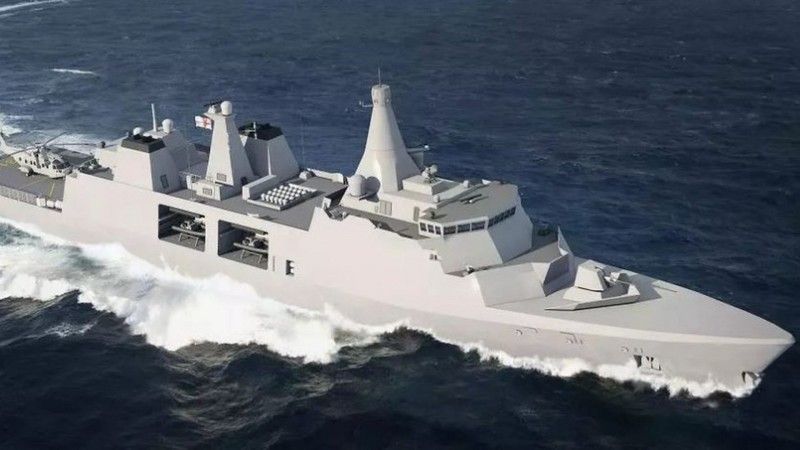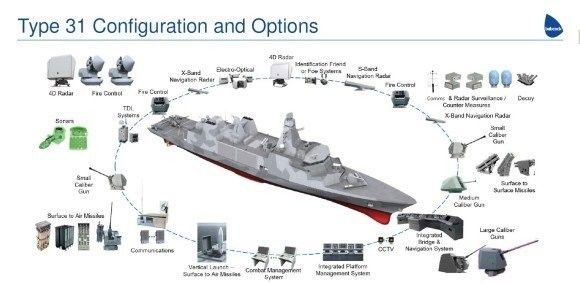Industry
PGZ Naval Shipyard Supports Building Warships for Royal Navy

Photo. Babcock
Last Sunday The Telegraph confirmed that the Rosyth-based Babcock facility ordered a hull section at the PGZ Stocznia Wojenna (Naval Shipyard) facility in Gdynia, for the second of the Type 31 frigates.
Last year, the establishment of industrial cooperation with a partner from the UK was announced by the President of the Management Board at PGZ SW. No Polish, detailed release on that followed in the coming months.
The PGZ-Miecznik consortium, working for the Armament Agency to deliver three Miecznik-class frigates, designated the Scottish Babcock shipyard as the partner and subcontractor. The Miecznik design is derived from Arrowhead 140.
Babcock is simultaneously working on five inexpensive Type 31 frigates, based on a contract signed with Royal Navy on 15th November 2019. These ships, also based on the Arrowhead 140 design, would be named HMS Venturer, Active, Formidable, Bulldog, and Campbeltown. The prototype has now been built since 23rd September 2021 - back then steel was cut for the future HMS Venturer. A similar event, regarding the HMS Active, took place on 23rd January 2023. The sections manufactured in Poland will be used to create that ship.

Photo. Babcock International
Royal Navy procured five Type 31 frigates that would act as complementary assets, alongside 8 Type 26 vessels. Type 26 frigates had been procured much earlier, on 2nd July 2017. They are far more complicated, well armed, and the build process had been slow from the very start. The HMS Glasgow prototype keel was laid on 20th July 2017, and it was launched on 25th November 2022. It is expected that the vessel would be commissioned around 2026. Another two frigates of the first series would enter service in 2028-2029. They have not been launched yet. The second series of five frigates would join the fleet during the upcoming decade.
Given the tempo adopted for the Type 26 programme, the UK decided to procure extra vessels in parallel, with that procurement also being quicker. Babcock was designated as the contractor who would rapidly deliver 5 Type 31 frigates by 2029/2030. That would be possible, as the current set of requirements defined for the Type 31 ships is less stringent than the one applicable in the case of Type 26 ships. The Type 31 vessels will be tailored for future armament upgrades. The programme's goal, for now, is to commission these ships in OPV role as soon as possible. This is the role that is expected to be assigned to them in the beginning. The modern Type 26 combatants would handle more demanding tasks, like becoming a part of the British carrier strike groups. That does not rule out a scenario in which the Type 31 vessels receive new weapons in the future. For now, these are to act as cheap and simple frigates, coming at GBP 250 million each.
The manufacturing effort undertaken at PGZ SW for Babcock and its size is unknown. The immediate media releases may suggest it is even less than significant. However, Babcock and PGZ SW may treat this as a test of competency. The hull sections are made in Gdynia, based on British documentation. They would be subjected to Ordering Party/Classification Association handoff procedures. Then, as one block, they would be shipped to Rosyth, where they are going to be blended with blocks built there.

Photo. Babcock International
The Telegraph's news piece inspired quite a vivid discussion in the media sphere. The proponents of Brexit accuse the authorities of not following the plan aimed at the restoration of the British shipbuilding industry, as they outsource some work to the EU. That group emphasizes the fact that the shipyards in the UK cannot build ships without foreign subcontractors or workers.
Meanwhile, those in favor of the Poland-UK collaboration point out that the value of outsourced effort remains minute, while Babcock became the main PGZ-Miecznik partner entity. Some British outlets designate Babcock as the winning bidder in the Polish Navy's frigate procurement. The proponents stress that Babcock's Miecznik income would be much greater than the value of the work contracted out to PGZ SW, regarding the HMS Active. Globally that would increase, not decrease the number of Babcock's employees.
Some unofficial opinions suggest that Poland may reciprocally order blocks for its Miecznik-class vessels in Scotland. And Miecznik frigates are going to be built in Gdynia and Gdansk. It is not a probable scenario, considering the economic reasoning behind it. The work hour cost in the UK is much higher than in Poland, and that would make any undertaking as such less than viable.
Verifying the Polish-UK collaboration framework, and the quality of work delivered by the shipyard workers from Gdynia is much more relevant here.
